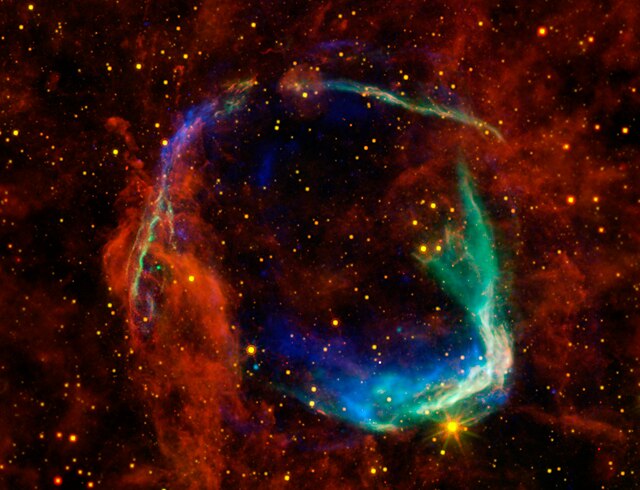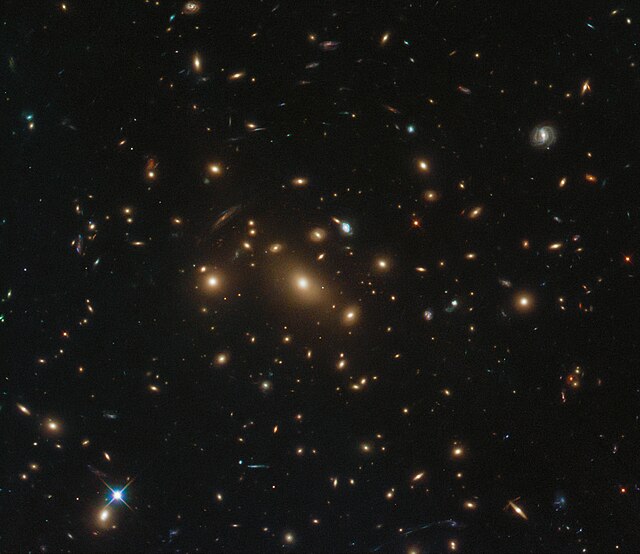SN 185 was a transient astronomical event observed in the year AD 185, likely a supernova. The transient occurred in the direction of Alpha Centauri, between the constellations Circinus and Centaurus, centered at RA 14h 43m Dec −62° 30′, in Circinus. This "guest star" was observed by Chinese astronomers in the Book of Later Han (后汉书), and might have been recorded in Roman literature. It remained visible in the night sky for eight months. This is believed to be the first supernova for which records exist.
Infrared images from NASA's Spitzer Space Telescope and WISE are combined with X-ray data from the Chandra X-ray Observatory and ESA's XMM-Newton Observatory in this image of RCW 86.
The SMARTS 0.9-meter Telescope has captured an echo of the past in this image. RCW 86 is a literal shell of its former self, the gaseous remnant of a supernova.
A supernova is a powerful and luminous explosion of a star. A supernova occurs during the last evolutionary stages of a massive star, or when a white dwarf is triggered into runaway nuclear fusion. The original object, called the progenitor, either collapses to a neutron star or black hole, or is completely destroyed to form a diffuse nebula. The peak optical luminosity of a supernova can be comparable to that of an entire galaxy before fading over several weeks or months.
SN 1994D (bright spot on the lower left), a type Ia supernova within its host galaxy, NGC 4526
The Crab Nebula is a pulsar wind nebula associated with the 1054 supernova.
A 1414 text cites a 1055 report: since "the baleful star appeared, a full year has passed and until now its brilliance has not faded".
2015 supernova in galaxy cluster RXC J0949.8+1707. In 2011, two supernovae were observed in the same face-on spiral galaxy.






